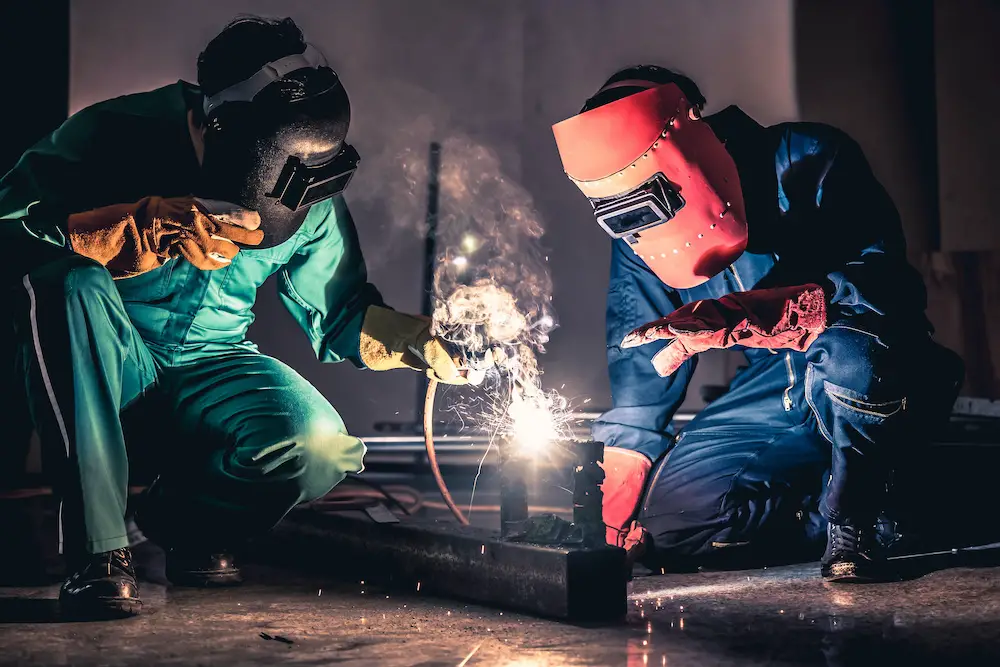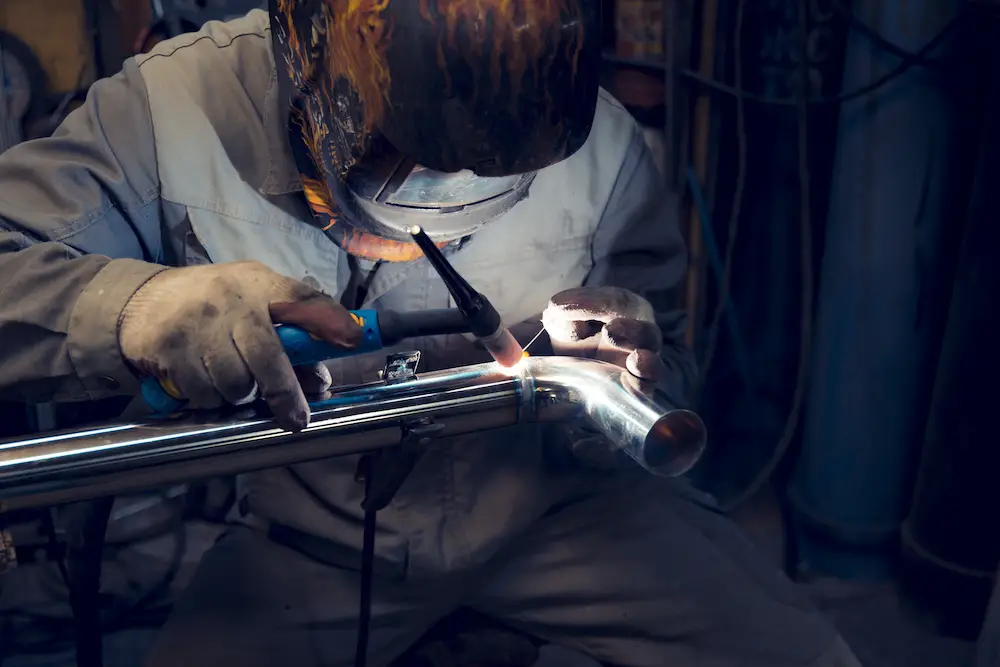Can you weld stainless steel? Yes, very much so. However, compared to other materials, you might face a couple of extra challenges.
The most tricky part of welding stainless steel is that it tends to scratch very easily, leaving behind unsightly blemishes you might not want for your project.
Don’t lose hope just yet, though; learning how to weld stainless steel with a MIG welder is not that difficult.
With the right tips and tricks, you can master welding stainless steel using your MIG welding machine.
And for that, we’ve got your back.
Can You Weld Stainless Steel With a MIG Welder?
You already know you can weld stainless steel, but can you weld stainless steel with a MIG welder?
Steel can quickly warp if you transfer too much heat to it.
At the same time, it will start to form a distorted shape as it cools down.
In essence, stainless steel is a tricky metal and will not be very forgiving to mistakes.
Hence, it requires at least some prior welding experience from the welder.
While people tend to have tantrum-worthy welding experiences with stainless steel, learning how to weld stainless steel with a MIG welder is definitely worth it.
MIG welding stainless steel is perfect if you are not worried about aesthetics because this type of welding is mostly about efficiency and speed.
How To Weld Stainless Steel With a MIG Welder
Of course, it’s not enough that you know whether can you MIG weld stainless steel or not; you also need to learn how to do it.
Here are some factors and best practices to keep in mind when welding stainless steel with a MIG welder:
Step 1: Create a Stable Base
A common practice of professional MIG welders consists of preparing a stable base to prevent the workpiece from moving and creating a bad angle.
To make sure it is braced properly, many use wood blocks cut to match the dimensions of the workpiece accurately.
If you are a novice welder and are worried about stainless steel warping, consider clamping a piece of brass or copper metal at the backside of the workpiece.
These metals are known to work as a cooling agent, helping reduce the temperature of the welding pool and preventing any burn-through effects.
Step 2: Prepare the Base Metal
Can you MIG weld stainless steel without preparing the base metal? The answer is short and crisp—no.
Not preparing the base metal is discouraged, as it helps you achieve your goal through the welding process.
Stainless steel is complicated to weld and is a much more sensitive metal compared to others.
If the base metal is not prepared properly, there can be residue in the form of carbon steel on it.
This residue will combine with your stainless-steel workpiece and damage it in the long term through rusting.
It is recommended that users keep their stainless steel and carbon steel work stations separate and far from one another.
In this way, there is less chance of cross-contamination through the fine particles of either metal.

Step 3: Ensure Adequate Heat Distribution
As mentioned earlier, stainless steel as a metal is very sensitive to heat.
It can quickly get burned through or cracked if the welder is not prepared for it.
One way to prevent this from occurring is to add provisions into your welding process to distribute the heat across the welding platform.
These provisions exist in the form of moving across the welding field fast.
Doing this would prevent the welding pool from gathering in one area and also reduce overall spatters.
Step 4: Get the Necessary Tools Ready
The success of your stainless-steel welding journey with a MIG welder depends on the tools you use.
Here are two essential tools you should be particularly cautious about:
Welding Wire
Choosing the appropriate welding wire for your stainless-steel welding project will go a long way in ensuring the success of your final product.
The most commonly used is a stainless-steel wire with a 0.030-inch diameter.
If you are working with a thicker base, use a stainless-steel wire with a diameter ranging between 0.035 inches and 0.045 inches.
Shielding Gas
MIG welding utilizes shielding gas that helps define the characteristics of the welding arc.
For stainless steel metal, the recommended shielding gas mixture is a combination of helium (90%), argon (7.5%), and carbon dioxide (2.5%).
Step 5: The Best Technique (Push Technique)
The push technique is the most commonly used method for welding stainless steel metal.
In layman’s terms, you are required to pull the welding gun away from the welding site or welding puddle so that there is less beading.
As a result, the workmanship is clean and effective.
More precisely, it is recommended that your travel direction is between five and 15 degrees for summon joints.
However, if you are working on more specialized joints, like the T-joint or the lap joints, opt for a greater angle, such as between 45 and 70 degrees.
Step 6: Prepping the Final Product
Stainless steel welding often requires the use of filler metal.
Unfortunately, this will cause some level of weld spatter even if you are an extremely meticulous welder.
As stainless steel is a sensitive metal, this spatter can affect its overall appearance.
Hence, it is important that your final stainless steel welded product is sanded or electropolished to remove unwanted spatters.
Choosing the type of cleaning process mostly depends on the filler metal you have used at the time of welding.
Conclusion
Can you weld stainless steel?
If you have ever wondered about this, we hope that this guide has helped clarify your inhibitions and doubts.
Stainless steel may be a complicated metal, but it is easy to weld and can lead to some epic projects.
After all, stainless steel can withstand the effects of weathering much better than other corrosive metals.
Still, in extreme circumstances, or in the case of cross-contamination with carbon steel particles, stainless steel can rust.
This is not particularly a byproduct of the kind of welding you choose but because of the oxidization that occurs and can be possible even if you opt for TIG welding.

